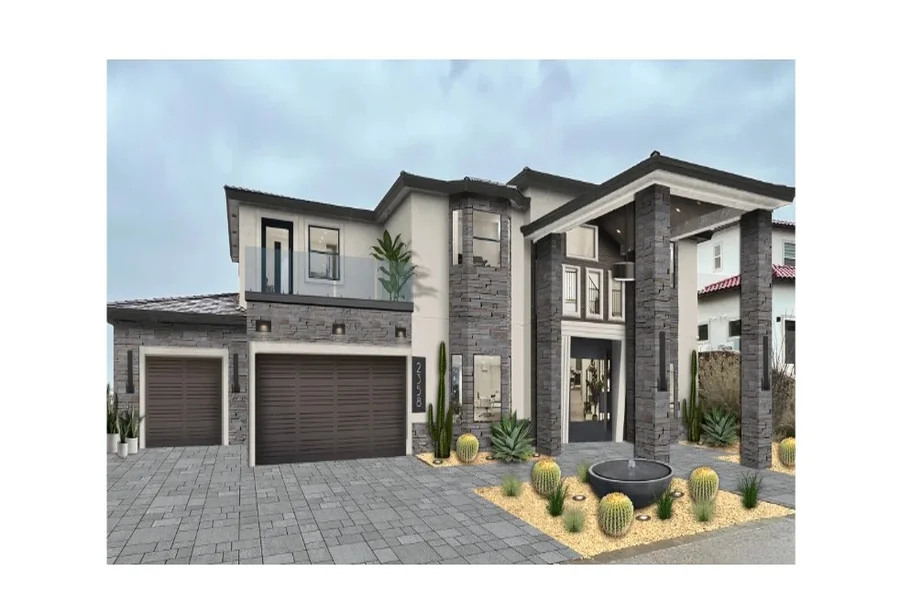A balcony not only extends your living space but also enhances the overall curb appeal of your home. However, the balcony railing is more than just a safety feature — it’s a statement piece. It reflects your style, complements your architecture, and determines how open or private your balcony feels. If you’re planning to upgrade or build a new balcony, choosing the right railing design can make all the difference.
In this guide, we’ll walk you through key considerations, design options, and practical tips to help you pick the perfect balcony railing that suits both function and flair.
Understanding the Purpose of Balcony Railings
Safety First
- Balcony railings are essential to prevent falls and provide security for elevated spaces.
- Ensure the design complies with local building codes, particularly with height and spacing.
Aesthetic Value
- The right railing design enhances your home’s exterior.
- It should blend seamlessly with your home’s architectural style—whether modern, traditional, or industrial.
Key Factors to Consider Before Choosing a Design
1. Architectural Style of Your Home
- Match your balcony railing with the rest of your home’s design.
- Modern homes: Minimalistic metal or glass railings.
- Classic designs: Wrought iron or decorative wooden styles.
- Modern homes: Minimalistic metal or glass railings.
2. Material Selection
- Choose based on durability, maintenance, and visual appeal.
Common Balcony Railing Materials:
- Metal: Offers strength and a sleek, modern appearance.
- Wood: Traditional, warm, and customizable, but needs regular maintenance.
- Glass: Provides an unobstructed view, perfect for scenic balconies.
- Cable: Minimalist and functional, works well for contemporary homes.
3. Maintenance Requirements
- Consider the climate in your region:
- Coastal homes benefit from rust-proof materials.
- Wood may not be ideal for humid areas unless properly sealed.
- Coastal homes benefit from rust-proof materials.
4. Privacy Preferences
- Want to relax in peace? Choose a design with partial coverage or frosted glass.
- If openness is your goal, go for cable or clear glass railings.
Popular Balcony Railing Designs to Inspire You
Horizontal Metal Railings
- Clean lines and an industrial look.
- Perfect for urban lofts or modern architectural styles.
Glass Panel Railings
- Provides a full view of the outdoors.
- Best for ocean-view or mountain-side properties.
Wooden Balusters
- Timeless and customizable.
- Ideal for cottages, farmhouses, or craftsman homes.
Wrought Iron Railings
- Highly decorative and durable.
- Pairs well with vintage or Mediterranean-style homes.
Mixed Material Designs
- Combine wood and metal or glass and steel for a unique look.
- Allows more creativity in blending safety and style.
How to Match Your Balcony Railing With Your Home Exterior?
Color Coordination
- Use complementary colors to tie in with window frames, shutters, and trim.
- Black railings offer contrast and boldness, while white or natural wood adds softness.
Texture and Finish
- Matte, glossy, or brushed finishes can subtly change the feel.
- Choose finishes that can withstand the elements and require minimal upkeep.
Proportions and Lines
- Scale the railing height and width to the overall size of your balcony.
- Thin lines can make a space feel more open, while chunky balusters make it more enclosed and private.
Customization Options for a Personal Touch
Decorative Panels
- Laser-cut metal panels offer intricate patterns.
- Adds artistic flair and uniqueness to your balcony.
Integrated Planters or Seating
- Some railings double as flower boxes or seating ledges.
- Functional and stylish, especially for small spaces.
Lighting Additions
- Integrate LED strips along the railing for night-time ambiance.
- Ensures safety and adds a luxurious touch.
Balcony Railing and Safety Compliance
- Always check local building codes for:
- Minimum height (usually around 36–42 inches).
- Maximum space between balusters (generally under 4 inches).
- Minimum height (usually around 36–42 inches).
- Especially important for homes with children or pets.
Beyond simply meeting building codes, prioritizing safety in your balcony railing design is an investment in long-term peace of mind. If your family has small children or pets, you could use balusters that go up and down instead of side to side to prevent climbing and for glass use panels made from tempered glass.
If your balcony is high or faces a busy road, wrought iron or steel can give you more confidence in your balcony’s safety. Also, keep in mind that if you will later put furniture, flower boxes or lights on the railing, the railing should be fastened strongly to hold all that weight.
Talking to a professional or engineer will ensure your posts, infills and handrails look good and are also safe for years to come. Ultimately, safety shouldn’t compromise aesthetics; with the right balance, your balcony railing can be a beautiful and secure extension of your home’s exterior.
Budgeting for Balcony Railing Installation
Cost Breakdown
- Materials: Can vary greatly. Glass and stainless steel are on the higher end.
- Labor: Custom installations or difficult access areas may increase cost.
- Finishing: Powder coating, staining, or painting adds to final expenses.
Tips for Saving
- Choose prefabricated kits if on a tight budget.
- Mix materials strategically—for example, wood posts with cable wiring.
Balcony Railing Trends in 2025
Minimalist Styles
- Clean lines and open views dominate current trends.
- Focus on light and space, especially in city apartments.
Sustainable Materials
- Eco-conscious homeowners are using recycled metals and responsibly sourced wood.
Smart Railings
- Some luxury railings now come with motion-sensor lighting or security features.
Common Mistakes to Avoid When Choosing Balcony Railings
Ignoring the Surrounding Architecture
- A mismatch in style can lower curb appeal.
Overcomplicating the Design
- Keep it simple to avoid visual clutter.
Neglecting Future Maintenance
- Always think long-term about how your railing will hold up.
Installing Your Balcony Railing: DIY or Hire a Pro?
When to DIY
- You’re using a simple railing kit.
- You have basic tools and construction knowledge.
When to Hire a Professional
- Custom designs or structural challenges.
- Need for compliance with specific safety regulations.
Hiring an expert ensures the balcony railing is secure, safe, and up to code.
Why Your Balcony Railing Is More Than Just a Barrier?
- It’s a style statement.
- It sets the tone for your outdoor space.
- It adds value to your home — especially when potential buyers or guests take notice of the attention to detail.
Let brick&batten Help You Create the Perfect Balcony Design
Looking to elevate your home’s exterior with the perfect balcony railing? At brick&batten, our virtual design team helps you visualise, plan, and execute your ideal balcony transformation. We don’t just recommend trends — we design for your space, your needs, and your lifestyle.
We blend aesthetics with function and ensure every choice complements your home. From modern glass panels to timeless wooden spindles, we’ll help you bring your balcony vision to life.
Explore our exterior design services today — let’s design your dream balcony together.
FAQs: Balcony Railings & brick&batten Services
1. What’s the best material for balcony railings in coastal homes?
Stainless steel or powder-coated aluminium works best in coastal areas because they resist corrosion and harsh weather conditions.
2. Can brick&batten help me visualise balcony railing designs before I install them?
Yes, we offer virtual exterior design services that show you exactly how your new balcony railing will look before any installation begins.
3. Do I need a building permit to install a new balcony railing?
In most cases, yes — especially if you’re modifying the structure or changing the height. Always check your local codes or consult a licensed contractor.
4. How do I maintain my wooden balcony railing?
Regular cleaning, sealing, or staining helps prevent rot, mold, and weather damage. Refinish every 1–2 years for best results.






